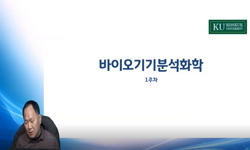A liquid chromatographic-tandem mass spectrometric (LC-MS/MS) method was developed and applied for the determination of human $A{\beta}1$-40 and $A{\beta}1$-42 peptides in transgenic mouse plasma to support preclinical pharmacodynamics studies. The me...
http://chineseinput.net/에서 pinyin(병음)방식으로 중국어를 변환할 수 있습니다.
변환된 중국어를 복사하여 사용하시면 됩니다.
- 中文 을 입력하시려면 zhongwen을 입력하시고 space를누르시면됩니다.
- 北京 을 입력하시려면 beijing을 입력하시고 space를 누르시면 됩니다.



Qualification and application of a liquid chromatography-tandem mass spectrometric method for the determination of human $A{\beta}1$-40 and $A{\beta}1$-42 peptides in transgenic mouse plasma using
한글로보기https://www.riss.kr/link?id=A100878430
- 저자
- 발행기관
- 학술지명
- 권호사항
-
발행연도
2014
-
작성언어
English
- 주제어
-
등재정보
SCIE,SCOPUS,KCI등재
-
자료형태
학술저널
- 발행기관 URL
-
수록면
636-644(9쪽)
- 제공처
-
0
상세조회 -
0
다운로드
부가정보
다국어 초록 (Multilingual Abstract)
A liquid chromatographic-tandem mass spectrometric (LC-MS/MS) method was developed and applied for the determination of human $A{\beta}1$-40 and $A{\beta}1$-42 peptides in transgenic mouse plasma to support preclinical pharmacodynamics studies. The method consisted of micro-elution solid phase extraction for sample preparation and LC-MS/MS analysis in the negative ion mode using electrospray ionization for analysis. $^{15}N_{53}-A{\beta}1$-40 and $^{15}N_{55}-A{\beta}1$-42 peptides were used as internal standards. A quadratic regression (weighted 1/concentrations), with an equation $y=ax^2+bx+c$, was used to fit calibration curves over the concentration range of 0.500-100 ng/mL for both $A{\beta}1$-40 and $A{\beta}1$-42 peptides. For quality control samples at 6.00, 40.0 and 80.0 ng/mL from the qualification experiment, the within-run accuracy ranged from -2.69 to 0.583 % with precision values ${\geq}8.23%$ for $A{\beta}1$-40. Within-run accuracy ranged from -4.83 to 10.1 % with precision values ${\geq}8.87%$ for $A{\beta}1$-42. Samples from a pharmacodynamics study using Tg2576 transgenic mice were analyzed by this qualified LC-MS/MS method and concentrations were compared to those generated by ELISA. The two methods were shown to be comparable for $A{\beta}1$-40 quantification of samples from the Tg2576 amyloid precursor protein transgenic mouse model, but varied slightly for $A{\beta}1$-42.
동일학술지(권/호) 다른 논문
-
Synthesis and cytotoxic evaluation of novel N-substituted amidino-1-hydroxybenzimidazole derivatives
- 대한약학회
- Alp, Mehmet
- 2014
- SCIE,SCOPUS,KCI등재
-
Synthesis and biological evaluation of glucagon-like peptide-1 receptor agonists
- 대한약학회
- Zhang, Yu-Juan
- 2014
- SCIE,SCOPUS,KCI등재
-
A new phenylethanoid glycoside with antioxidant and anti-HBV activity from Tarphochlamys affinis
- 대한약학회
- Zhou, Xian-Li
- 2014
- SCIE,SCOPUS,KCI등재
-
- 대한약학회
- Zhang, Xiao Dan
- 2014
- SCIE,SCOPUS,KCI등재





 ScienceON
ScienceON


